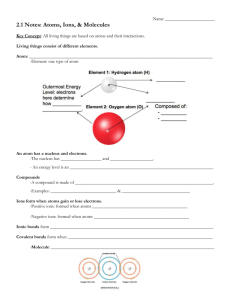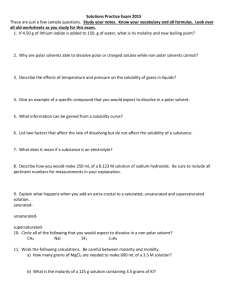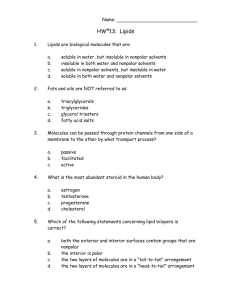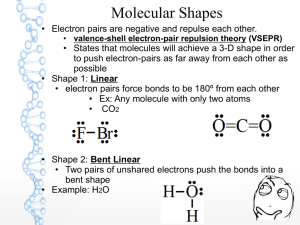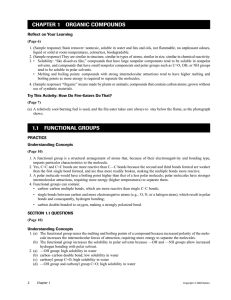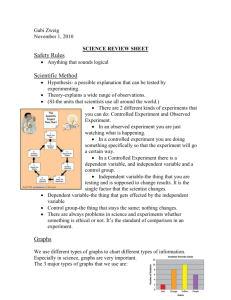Handout
advertisement
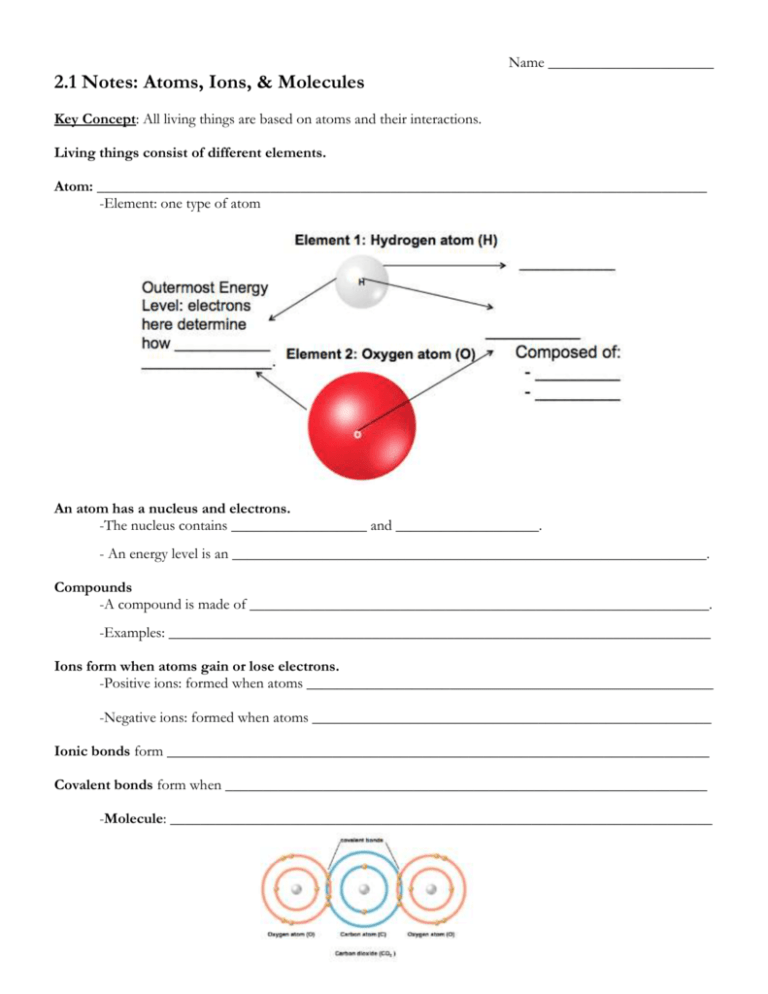
Name ______________________ 2.1 Notes: Atoms, Ions, & Molecules Key Concept: All living things are based on atoms and their interactions. Living things consist of different elements. Atom: _________________________________________________________________________________ -Element: one type of atom An atom has a nucleus and electrons. -The nucleus contains __________________ and ___________________. - An energy level is an _______________________________________________________________. Compounds -A compound is made of _____________________________________________________________. -Examples: ________________________________________________________________________ Ions form when atoms gain or lose electrons. -Positive ions: formed when atoms ______________________________________________________ -Negative ions: formed when atoms _____________________________________________________ Ionic bonds form ________________________________________________________________________ Covalent bonds form when ________________________________________________________________ -Molecule: ________________________________________________________________________ 2.2 Notes: Properties of Water Key Concept: Water’s unique properties allow life to exist on Earth. Life depends on hydrogen bonds in water. Water is a ____________ molecule. o Polar molecules: ______________________________________________________________ o Nonpolar molecules: __________________________________________________________ Hydrogen bonds are responsible for three important properties of water. 1. High specific heat: __________________________________________________________________ a. Example: 2. Cohesion: _________________________________________________________________________ a. Example: 3. Adhesion: _________________________________________________________________________ a. Example: Solid ice is less dense than liquid water. Ice floats on water: one of the only solids to float on its liquid form – due to arrangement of water molecules due to charged regions (water is polar). o Provides insulation for water below (stays at about 4 degrees C – freezing point is 0 C) Many compounds dissolve in water. A solution is formed when ___________________________________________________________. A solution is a _____________________________________________. Parts of a solution (Ex. Salt water): o Solvents ___________________________________________________________________ o Solutes _____________________________________________________________________ Polarity “Like dissolves like” o Polar solvents dissolve polar solutes (Example: ______________________________________) o Nonpolar solvents dissolve nonpolar solutes. o Polar substances and nonpolar substances generally remain separate (think of ______________ forms a suspension when shaken). Some compounds form acids or bases. Acids ____________________________________________________________________________ _________________________________________________________________________________ o pH: _____________________ Neutral solutions ___________________________________________________________________ o pH: _____________________ Bases ____________________________________________________________________________ _________________________________________________________________________________ o pH: _______________
